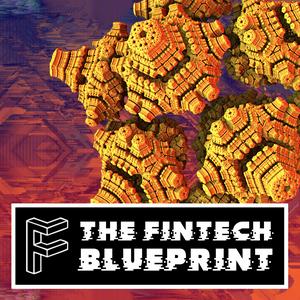193 episodes

Building a Top 5 Global Crypto Exchange with 120M Users, with Bitget CEO Gracy Chen
2025/12/29 | 43 mins.
In this episode, Lex speaks with Gracy Chen - Bitget’s CEO, who transitioned from a fintech entrepreneur to leading one of the top five global crypto exchanges. Bitget processes $10–20 billion in daily trading volume and serves 120 million users across centralized and decentralized platforms. Its geographic base is mostly in Asia, but it’s expanding into Europe through regulatory compliance and new products like tokenized US stocks, which have already surpassed $20 billion in trading volume.Bitget differentiates through security features, including a $600 million protection fund, and user acquisition via both brand campaigns (e.g. Messi sponsorship) and local affiliate (KOL) marketing. Looking ahead, Bitget aims to move beyond crypto-native assets toward mass adoption, focusing on product-market fit and offering tokenized real-world assets and enterprise services.NOTABLE DISCUSSION POINTS:Bitget Is Transitioning Toward Regulatory Compliance and Tokenized AssetsBitget, historically an offshore crypto exchange, is shifting to a compliance-first strategy in key markets like Europe (e.g., under MiCA). It’s also diversifying its product offering beyond altcoins, including tokenized US stocks and forex, which have already generated $20B in trading volume. This reflects a broader industry trend where crypto platforms aim to integrate with traditional finance and support real-world assets (RWAs).Bitget’s User Acquisition Combines Web2 Financial Discipline with Web3 Community TacticsBitget uses a hybrid marketing approach: brand partnerships like the Leo Messi campaign and grassroots affiliate marketing via KOLs (Key Opinion Leaders) who earn volume-based rebates. Additionally, local teams are given budget control and tailor acquisition strategies per market. This decentralized yet data-informed model mimics Web2 CAC (Customer Acquisition Cost) analysis while leveraging crypto-native community dynamics.Exchanges Are Struggling with Unsustainable Token Launch ModelsGracy Chen criticizes the crypto industry’s overreliance on speculative “narrative-driven” token launches, noting that even well-funded tokens often fail without real product-market fit. Bitget is responding by requiring more tangible utility and sustainability from listed projects and aims to balance value across users, exchanges, and project teams through mechanisms like airdrop campaigns and launch pools with TOPICSBitget, Bitget Wallet, Bitkeep, Coinbase, Binance, FTX, MetaMask, MicroStrategy, BlackRock, crypto, crypto exchange, token, altcoins, digital assets, tokenized assets, tokenizationABOUT THE FINTECH BLUEPRINT🔥Subscribe to the Fintech Blueprint newsletter to stay at the forefront of Fintech and DeFi: https://bit.ly/3hyhlC2🤝 Partner with Fintech Blueprint through sponsorships: https://bit.ly/3UZllsV👉 Twitter: https://twitter.com/LexSokolin TIMESTAMPS1’03: A $300 Revelation: The Unlikely Path to Running a Global Crypto Exchange4’00: From Offshore to Onshore: Scaling a Global Exchange for 120 Million Users10’09: Chasing Real Value: How Product Market Fit Outlasts Hype15’39: Market Structure in Flux: How Speculators Gave Way to Institutions19’14: Inside the Exchange: How Marketing and Trust Drive User Growth26’20: Balancing the Books: Navigating User Acquisition in Web3 vs Web230’38: Speculation and Signal: How Culture and KOLs Drive Crypto Adoption in Asia34’11: Fixing the Feedback Loop: Rethinking Token Launches and Expanding Beyond Altcoins40’42: Beyond the Hype: Building Sustainable Demand for Tokenized Assets Disclaimer here — this newsletter does not provide investment advice and represents solely the views and opinions of FINTECH BLUEPRINT LTD.Contributors: Lex, Laurence, Matt, Farhad, Mike, DaniellaWant to discuss? Stop by our Discord and reach out here with questions.

From $12.5M ICO to $100B+ in On-Chain Infrastructure, with Gnosis Co-Founder Friederike Ernst
2025/12/01 | 42 mins.
In this episode, Lex speaks Friederike Ernst, co-founder of Gnosis. Together, they explore the evolution of Gnosis from an Ethereum-based prediction market project into a major infrastructure provider powering over $100 billion in DAO treasuries and $10–15 billion in monthly DEX trading via CowSwap. Tracing the company’s journey from a 2017 ICO raising $12.5 million in ETH (now worth ~$450 million) to spinning out critical tools like Safe, CowSwap, and Zodiac, all originally built for internal use.Despite their success, Gnosis recognizes that the crypto-native user base is limited and has now pivoted to building user-centric, mainstream products like the upcoming Gnosis App targeting Gen Z with real-world financial utility. The company emphasizes its founding mission of democratizing financial ownership and warns against complacency as incumbents like Stripe and Robinhood enter the space. Lastly, Gnosis sees a near-term opportunity in AI-agent driven commerce, especially through reverse advertising models that could unlock trillion-dollar markets.NOTABLE DISCUSSION POINTS:The $12.5M ICO That Became a $450M Treasury: Gnosis raised $12.5 million in ETH during their 2017 ICO when ETH was trading at $40. Through conservative treasury management and holding their ETH position, that initial raise has sustained the company for nearly a decade and grown to approximately $450 million today. Friederike attributes this to “conservative treasury management and sheer luck” — a remarkable case study in long-term crypto treasury stewardship.Polymarket Runs on Gnosis Infrastructure: Despite Polymarket’s $10B+ valuation and mainstream recognition, it still uses Gnosis’s conditional token framework that was written years ago. Friederike acknowledges being “a little salty” that infrastructure they built powers such a significant share of the on-chain prediction market economy without Gnosis directly benefiting financially. It’s a stark illustration of the “first up the mountain” dynamic where pioneers clear the path but don’t always capture the value.The 19th Century German Banking Parallel: Friederike draws a compelling historical analogy: impoverished German farmers in the 1800s faced predatory moneylenders charging 25-40% interest. They responded by forming collective community banks, lending to each other at 4-6%. Within decades, tens of thousands existed, and one-third of Germans remain members today. She positions crypto’s ownership model as the modern equivalent — a cooperative financial revolution for a generation economically disenfranchised by incumbent systems.TOPICSGnosis, Gnosis Safe, CowSwap, Zodiac, CPK, Polymarket, Kalshi, ConsenSys, Ethereum, ETH, AI, AI Agents, ICO, Onchain, Governance, Crypto Treasury, Web3, Blockchain, Finance, Banking, Payments, Custody, WalletsABOUT THE FINTECH BLUEPRINT🔥Subscribe to the Fintech Blueprint newsletter to stay at the forefront of Fintech and DeFi: https://bit.ly/3hyhlC2🤝 Partner with Fintech Blueprint through sponsorships: https://bit.ly/3UZllsV👉 Twitter: https://twitter.com/LexSokolin TIMESTAMPS1’25: From Prediction Markets to On-Chain Governance: The Gnosis Journey with Friederike Ernst6’09: Early ICO Bets and Lasting Impact: How Treasury Design and Tooling Shaped On-Chain Governance14’10: Owning the Problem: Turning Internal Crypto Tools into Customer-Facing Products18’08: Beyond Crypto Natives: Building User-Friendly Blockchain Finance for the Next Billion24’34: Beyond the Noise: Staying True to Web3’s Ownership Revolution28’48: Culture as the Catalyst: Building User-Owned Financial Systems for a Disenfranchised Generation32’59: Reinventing Everyday Banking: A Self-Custodial Money App for the Postbank Era36’48: AI Agents With Wallets: Gnosis Chain as the Payment Rail for Autonomous Finance39’49: Reverse Advertising: How AI Agents Will Turn Your Attention Into a Trillion-Dollar Market Disclaimer here — this newsletter does not provide investment advice and represents solely the views and opinions of FINTECH BLUEPRINT LTD.Contributors: Lex, Laurence, Matt, Farhad, Mike, DaniellaWant to discuss? Stop by our Discord and reach out here with questions.

Building the $500MM+ Binance-based Digital Asset Treasury, with BNB Network CEO David Namdar
2025/11/12 | 45 mins.
In this episode, Lex speaks with David Namdar - CEO of the BNB Network Company, kicking off with his journey from early Bitcoin adoption in 2012 to co-founding Galaxy Digital and now leading the BNB Network Company. Namdar explains the evolution of public markets’ engagement with crypto, highlighting how regulatory hurdles and speculative cycles shaped market participation. He outlines the rise of Digital Asset Treasury (DAT) companies, crediting Michael Saylor’s MicroStrategy for pioneering the model by converting $400 million in cash to Bitcoin - now holding over $75 billion in BTC. We examine how Binance, with 290 million users and 40% of global crypto volume, supports BNB as a deflationary asset, burning up to $2 billion per quarter. Finally, Namdar shares why BNB, not Bitcoin, is the focus of his new DAT initiative, offering U.S. investors exposure to an underrepresented but powerful asset.NOTABLE DISCUSSION POINTS:Digital Asset Treasuries Are Emerging as Crypto ETFs in Disguise: Public companies like MicroStrategy and MetaPlanet are turning their balance sheets into crypto holdings, offering indirect exposure to Bitcoin, Ethereum, and BNB. This model is attracting billions and creating a new on-ramp for investors -especially where ETFs or direct access are limited.BNB Is Massively Used Yet Underrepresented in U.S. Markets: With 290 million users and up to $2B in quarterly token burns, BNB is one of the most used tokens globally. Yet it’s largely inaccessible to U.S. investors, creating a major disconnect and a potential opportunity for BNB-focused public vehicles.Crypto Booms Often Rely on Misunderstood, Unsustainable Incentives: Namdar highlights how past cycles inflated demand through staking rewards and nominal yields, not real value. A lack of economic literacy continues to fuel hype over fundamentals, risking long-term sustainability. TOPICSBNB Network Company, Binance, BNB, Galaxy Digital, SolidX Partners, MicroStrategy, Bitcoin, Bitcoin treasury, Ethereum, Digital Asset Treasury, DAT, treasury, crypto, convertible debt, tokenomics, crypto treasury, capital markets ABOUT THE FINTECH BLUEPRINT🔥Subscribe to the Fintech Blueprint newsletter to stay at the forefront of Fintech and DeFi: https://bit.ly/3hyhlC2🤝 Partner with Fintech Blueprint through sponsorships: https://bit.ly/3UZllsV👉 Twitter: https://twitter.com/LexSokolin TIMESTAMPS1’09: Building the Crypto Investment Bank: Taking Digital Assets to Public Markets4’43: Why Going Public Matters: Crypto Firms, Capital Access, and Market Credibility7’28: From Fintech to DeFi: How U.S. Markets Mispriced the Crypto Transition11’07: Real Yield vs. Hype: Why Crypto Markets Keep Getting It Wrong14’36: The Rise of Digital Asset Treasuries: How Crypto Became a Corporate Balance Sheet Strategy18’28: Financial Engineering in Crypto Treasuries: How Convertible Debt Fueled Massive Bitcoin Accumulation22’23: Boom, Hype, Exhaustion: The Capital Cycle Behind Crypto Treasuries28’52: From Foundations to Public Markets: Why BNB Is the Next Big Treasury Bet33’25: BNB by the Numbers: Inside the Tokenomics of the World’s Largest Crypto Exchange39’18: Premiums, Discounts, and Buybacks: Managing Value in Crypto Treasury Stocks44’41: The channels used to connect with David & learn more about BNB Network Co. Disclaimer here — this newsletter does not provide investment advice and represents solely the views and opinions of FINTECH BLUEPRINT LTD.Contributors: Lex, Laurence, Matt, Farhad, Mike, DaniellaWant to discuss? Stop by our Discord and reach out here with questions.

How WalletConnect Became the $400B Web3 Connectivity Layer, with CEO Jess Houlgrave
2025/10/28 | 41 mins.
In this episode, Lex speaks with Jess Houlgrave, CEO of WalletConnect. In this episode Jess explains how WalletConnect bridges wallets and decentralized applications (dApps), simplifying secure blockchain interactions for millions of users.Together, Lex and Jess discuss the platform’s origins, technical innovations, and massive scale - supporting over 700 wallets and 70,000 projects. The conversation covers challenges in integrating traditional finance with Web3, regulatory compliance, and WalletConnect’s decentralized, token-incentivized network. Jess also shares insights on the future of on-chain commerce, global adoption trends, and the evolving relationship between fintech and blockchain infrastructure.NOTABLE DISCUSSION POINTS:WalletConnect Becomes Web3’s Financial Backbone: Once a simple UX fix, WalletConnect now connects 700+ wallets and 70,000+ apps, moving $400B annually. It’s evolving into the universal connectivity layer for on-chain finance - a “Visa for Web3.”Fintechs Are Forcing Crypto to Grow Up: As players like Stripe and Shopify enter Web3, they demand frictionless UX and regulatory-grade compliance, not crypto-native clunkiness. This wave will make crypto invisible but usable through embedded fintech experiences.Stablecoins Will Power On-Chain Commerce and Dollarization: Jess predicts commerce, not trading, will drive the next cycle. As stablecoins become spendable everywhere, users won’t need to off-ramp - accelerating global dollarization via open financial rails. TOPICSWalletConnect, ReOWN, Circle, Stripe, Checkout.com, MetaMask, Solana, blockchain, decentralized finance, DeFi, crypto, wallet, Web3, web2, UX, wallet infrastructure, stablecoins, tokens, token economy ABOUT THE FINTECH BLUEPRINT🔥Subscribe to the Fintech Blueprint newsletter to stay at the forefront of Fintech and DeFi: https://bit.ly/3hyhlC2🤝 Partner with Fintech Blueprint through sponsorships: https://bit.ly/3UZllsV👉 Twitter: https://twitter.com/LexSokolin TIMESTAMPS1’03: WalletConnect’s Financial Connectivity Layer: CEO Jess Houlgrave on Helping Build The New Internet4’42: Universal Wallet Interoperability: How a Single Integration Connects Every App to Every Wallet9’06: Building Trust in Web3: How Seamless Wallet Connections Create the ‘Visa Moment’ for Crypto11’51: Scaling Web3 Connectivity: Inside the 50 Million Users and $400 Billion Powered by Wallet Infrastructure14’02: The Next Wave of Adoption: How Better UX and Fintech Integration Are Bringing Millions On-Chain16’53: Beyond Ethereum: How Multi-Chain Support and Compliance Are Driving the Next Phase of Web3 Growth19’41: When Web2 Meets Web3: How Fintechs Are Redefining Crypto UX and Compliance Standards22’34: Bridging the Knowledge Gap: Helping Fintechs Understand the Complexities of Web3 Integration26’37: The New Chain Race: Why Fintechs Are Repeating Banks’ Playbook and Competing for Value Capture in Web330’05: Decentralizing the Network: How Wallet Infrastructure Is Building a Sustainable Token Economy35’44: The Future of On-Chain Commerce: How Stablecoins and UX Advances Will Drive Real-World Payments39’46: The Rise of Digital Dollarization: How Open Financial Systems Are Reshaping Global Currencies40’57: The channels used to connect with Jess & learn more about WalletConnect Disclaimer here — this newsletter does not provide investment advice and represents solely the views and opinions of FINTECH BLUEPRINT LTD.Contributors: Lex, Laurence, Matt, Farhad, Mike, DaniellaWant to discuss? Stop by our Discord and reach out here with questions.

How Tandems/SigFig became a $60B Wealth AI platform, with CEO Mike Sha
2025/10/06 | 44 mins.
In this episode, Lex speaks Mike Sha - the CEO and co-founder of Tandems (formerly SigFig), a leading provider of AI-powered software for wealth management firms and financial institutions. Together, Lex and Mike discuss the evolution of wealth technology through the lens of Mike’s entrepreneurial journey from founding Wikinvest in 2006 to building Tandems. Wikinvest pivoted to portfolio tracking and then to a B2B model, powering major portals like Yahoo Finance and managing over $500 billion in tracked assets. The team’s insights into poor retail investment behavior led to building SigFig, a B2B robo-advisor, eventually serving banks like UBS and Wells Fargo.Today, rebranded as Tandems, the firm offers AI-powered tools for advisors across three key areas: meetings, asset gathering, and investment management, with AI integrated via a modular “wealth OS” platform. Tandems uses an open architecture for AI, prioritizing trust, configurability, and high accuracy tailored to the specific workflows of financial advisors. NOTABLE DISCUSSION POINTS:The Realization That Most Investors Struggle on Their Own Sparked the Robo-Advisory Movement - Mike Sha’s early data from tracking $400–500 billion in retail portfolios across Yahoo!, CNN, and other finance portals revealed that most individuals consistently underperform when managing their own investments. This insight directly led to the creation of SigFig, one of the first robo-advisors, designed to make high-quality investment advice affordable and automated. It shows how data-driven observation of user behavior can uncover market inefficiencies and spark new product categories.Distribution and Integration Trumps Pure Innovation in Fintech Partnerships - Tandem’s evolution from a consumer-facing platform to a B2B software provider for major banks underscored a critical lesson: distribution and trust are the hardest parts of scaling in financial services. Rather than trying to replace institutions, Sha’s team embedded within them - learning that success requires deep integration with legacy systems and respect for the bank’s compliance and operational frameworks. The “secret” to working with large financial institutions, Sha notes, is understanding their old infrastructure and designing around it - not fighting it.AI’s Real Impact in Wealth Management Will Begin with Eliminating Repetitive Work - Tandem’s current strategy focuses on AI automation for financial advisors, not as a replacement but as an assistant. Sha highlights that over 90% of an advisor’s day involves repetitive administrative work - meeting prep, paperwork, compliance, follow-ups. Tandem’s “Wealth OS” connects legacy systems and uses AI to automate these tasks first, freeing advisors to focus on human relationship-building and advice. It’s a practical and near-term vision of AI in finance: efficiency before intelligence. TOPICSTandems, SigFig, Wikinvest, wealthtech, wealth management, fintech, ai, artificial intelligence, investment, roboadvisors, finance, financial management, banking, bank partnerships ABOUT THE FINTECH BLUEPRINT🔥Subscribe to the Fintech Blueprint newsletter to stay at the forefront of Fintech and DeFi: https://bit.ly/3hyhlC2🤝 Partner with Fintech Blueprint through sponsorships: https://bit.ly/3UZllsV👉 Twitter: https://twitter.com/LexSokolin TIMESTAMPS1’31: From Wikis to Wealth Tech: Mike Sha on How 401(k)s and “Investing-as-a-Chore” Shaped Tandems7’05: Building a Fintech from the First Dot-Com Boom: The Origins of Tandem’s Founding Partnership10’46: Turning Drive-By Traffic into Real Investors: The SEO Strategy That Sparked a $500B Fintech Shift16’25: Following the Money: How Tandems Scaled Through Bank Partnerships and the Hidden Art of Integrating Legacy Systems21’58: Inside the Fintech–Bank Power Dynamic: Lessons from Partnering with UBS and Navigating the Enterprise Maze25’36: Scaling Smart: How Tandems Grew from 25 to 100 People by Blending Finance, Software, and Global Talent29’55: Beyond Robo-Advisors: How Tandems Rebranded to Tackle Wealth Management’s “Unsexy” Problems with AI34’02: AI for Advisors: Automating the 90% of Work They Don’t Want to Do39’32: Open Architecture, Not One Model: How Tandem Builds Reliable AI for Financial Institutions43’53: The channels used to connect with Mike & learn more about Tandems Disclaimer here — this newsletter does not provide investment advice and represents solely the views and opinions of FINTECH BLUEPRINT LTD.Contributors: Lex, Laurence, Matt, Farhad, Mike, DaniellaWant to discuss? Stop by our Discord and reach out here with questions.
More Business podcasts
Trending Business podcasts
About The Fintech Blueprint
Listen to The Fintech Blueprint, The Diary Of A CEO with Steven Bartlett and many other podcasts from around the world with the radio.net app

Get the free radio.net app
- Stations and podcasts to bookmark
- Stream via Wi-Fi or Bluetooth
- Supports Carplay & Android Auto
- Many other app features
Get the free radio.net app
- Stations and podcasts to bookmark
- Stream via Wi-Fi or Bluetooth
- Supports Carplay & Android Auto
- Many other app features


The Fintech Blueprint
download the app,
start listening.






































